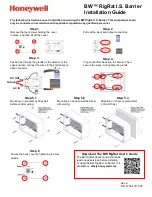
25
10. Description of functions
a) Operating principle
This product uses VLF (very low frequency) technology. VLF metal detectors consist of a transmitter coil, a receiver
coil and circuits with microprocessors that process the signals. The outermost coil on the transmitter coil functions
as the transmitter. An alternating current with a preset frequency is transmitted through this coil. This generates a
magnetic field along the vertical axis to the ground. The magnetic field induces eddy currents in metal objects under
the ground. These currents then generate an opposite magnetic field in the receiver coil, which is located inside the
transmitter coil. The inducing and induced currents are delayed due to inductive reactance. This phase shift of the
currents in the transmitter and receiver coil enables the VLF metal detector to identify the type of metal.
b) Metal differentiation (discrimination)
Each metal type exhibits its own characteristic phase shift, which makes it possible to distinguish between different
types of metals. Using phase shift to identify different types of metals is known as discrimination. Metal objects with
inductive resistance, i.e. large objects made of good conductors (gold, silver, copper) exhibit a larger phase shift.
Metal objects with ohmic resistance, i.e. small objects made of poor conductors exhibit a smaller phase shift. See the
following list for the approximate conductivity values of different conductors (metals and electrolytes).
Material Electrical
conductivity (S/m)
Material
Electrical
conductivity (S/m)
Material
Electrical
conductivity (S/m)
Silver
63.01 × 106
Gold
45.2 × 106
Calcium
29.8 × 106
Nickel
14.3 × 106
Platinum
9.66 × 106
Zinc
16.6 × 106
Copper
59.6 × 106
Aluminium
37.8 × 106
Fresh water 0.0005 ~ 0.05
Iron
9.93 × 106
Tin
9.17 × 106
Salt water
4.788
















































